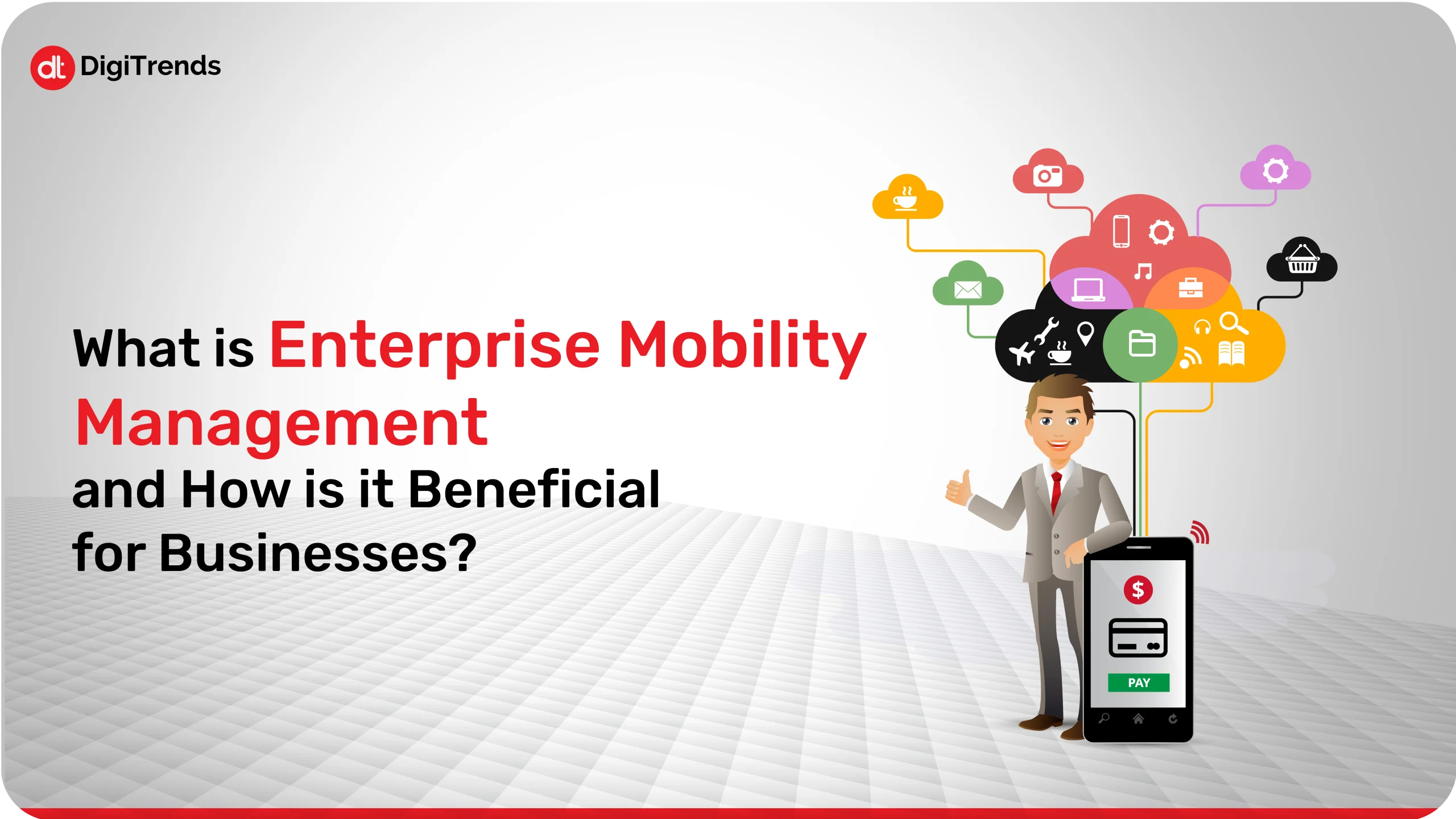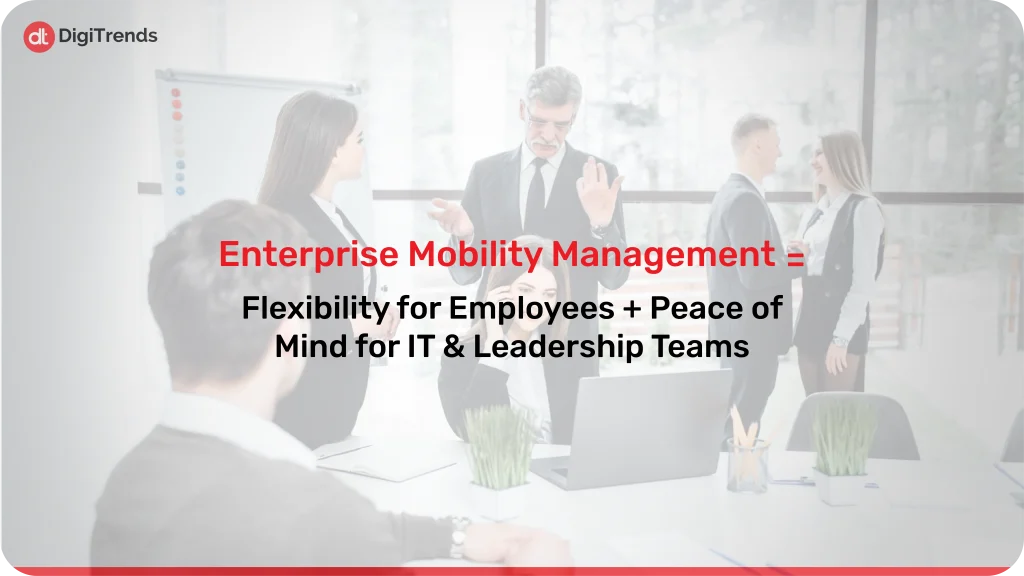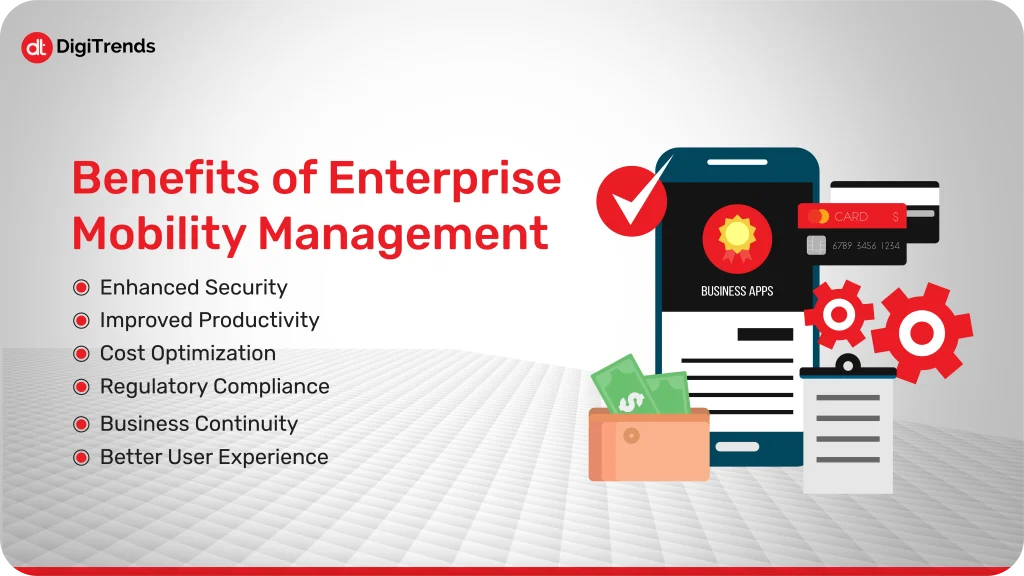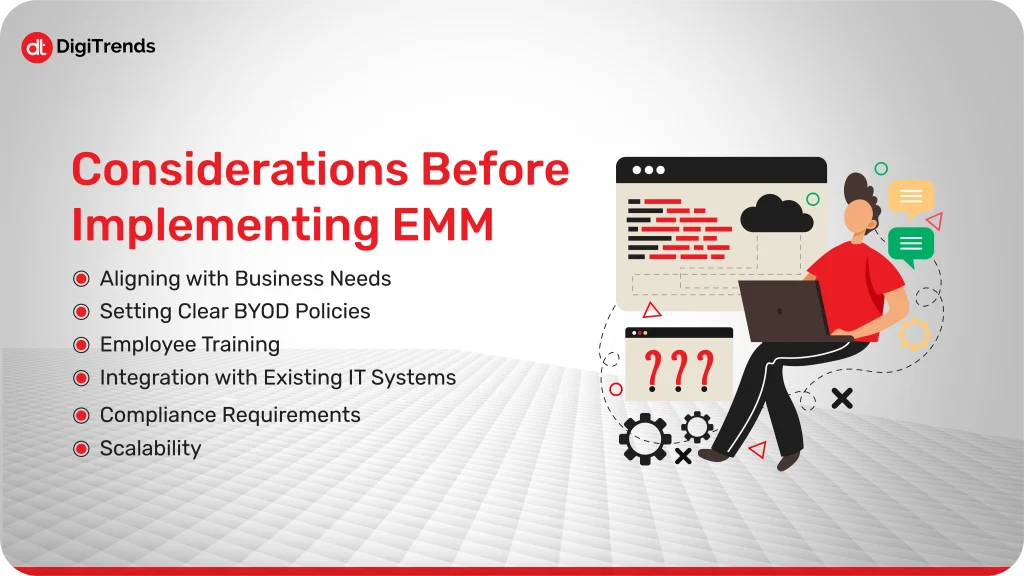The Growing Role of Business Intelligence in the Healthcare Industry
Explore the growing role of business intelligence in the healthcare industry, its key benefits, challenges, future trends, and more.
Continue Reading
The modern workplace no longer lives inside office walls. Most companies allow employees to work remotely and switch between devices according to their will and convenience. This practice helps organizations increase flexibility for employees and foster productivity.
An employee might start their day checking emails on their personal phone, switch to a laptop for a client presentation, and later use a tablet to share updates in a meeting. Many companies now also support bring your own device (BYOD) to give employees the freedom to work on personal devices.
Although this might sound like increased flexibility and productivity for employees, it also comes with challenges like security issues, data leaks, and more workload for IT teams. These challenges occur due to employees switching between their phones, company-provided devices, and more to complete their work.
Enterprise mobility management (EMM) solutions can easily tackle these security risks. According to Fortune Business Insights, the global enterprise mobility management market size is expected to reach approximately USD 189 billion in 2032.
In this blog, let’s explore what enterprise mobility management software is, how it works, the components that make it tick, and most importantly, the benefits of enterprise mobility for businesses of all sizes.
So what is EMM?
Enterprise mobility management is a framework that helps organizations manage mobile devices, applications, and data in a secure and efficient way.
Imagine an employee switches between their personal devices and the company laptop for work purposes. Working like this might be convenient for the employee and increase their productivity, but if the data is not handled securely, even one slip could expose sensitive information of the organization.
With the help of enterprise mobility software, organizations can easily control access, apply security policies, and even remotely wipe data if a device is lost or compromised.
So, enterprise mobility management basically means more flexibility for employees with peace of mind for IT and leadership teams.

The enterprise mobility management services revolve around a centralized dashboard. IT teams can monitor every registered device, enforce rules, and respond instantly when issues arise. Here’s a simple workflow:
Whenever a new employee joins, their device would be registered in the mobility management software, and policies like password strength and app permissions would be applied automatically.
The employee would only be able to access approved apps like email, CRM, or document storage without any risk of data leaks.
The EMM dashboard will show whether devices are compliant, patched, and safe.
If any device is lost or shows suspicious activity, IT can lock it or wipe data remotely.
This makes EMM more than just software. It’s a digital guardian that operates in the background to ensure employees can work flexibly without opening doors to cyber threats.

An EMM solves a huge area of security risk for organizations. Let’s have a look at its benefits:
One of the biggest enterprise mobility advantages is security. This solution protects the organization against threats like malware, phishing, and unauthorized access.
The software comes with features like remote wipe, encryption, and app control that ensure that sensitive data won’t fall into the wrong hands.
When there are no access issues, employees can work faster with already approved devices to collaborate, share files, or join meetings securely. Some employees are also more productive when they have the leverage to work on the device of their choice.
With this software, organizations can allow employees to switch between devices, helping increase their productivity.
Devices are expensive, and if a small business can’t afford to provide employees with too many devices, they can offer BYOD while keeping control through EMM. This will cut costs and reduce maintenance overhead for the organization.
Some EMM systems also include mobile expense management, tracking data usage, and roaming charges, so businesses can keep telecom bills under control.
Some industries are surrounded by strict compliance policies. EMM enforces policies aligned with specific regulations such as GDPR, HIPAA, and PCI-DSS. By restricting data storage and transactions, organizations can avoid mishaps and costly fines.
Sometimes employees might have to work from home due to issues like bad weather or a power outage in the office. With a cloud-driven enterprise mobility management software, employees can still stay connected and continue working smoothly.
Strict security might sound like it would be hard for employees, but EMM actually improves their experience. Single sign-on (SSO), secure file sharing, and approved app access create a frictionless environment for day-to-day work.
For the Specific Needs of Your Organization.
Get StartedThere are different technologies and components involved in EMM solutions. Let’s have a look at some core components:
MDM focuses on the devices themselves. IT teams can enforce password rules, push software updates, and track devices in real time. It’s the foundation of every EMM system.
MAM controls how apps are used within the organization. IT can whitelist business apps, restrict downloads, and sandbox corporate data so it doesn’t mix with personal apps.
For example, employees can use WhatsApp on their phones, but sensitive company files can only be shared through approved apps like Microsoft Teams.
This component ensures the right people have the right access. Features like multi-factor authentication, biometrics, and role-based access protect sensitive data.
Mobility has hidden costs such as data usage, roaming, and subscription fees. MEM tools monitor these expenses and give businesses more visibility over telecom budgets.
Together, these five layers form a complete EMM framework that balances security, productivity, and cost efficiency.

An organization must plan carefully before implementing enterprise mobility management solutions. The first step should be creating a roadmap that can help with smooth deployment. Let’s have a look at some factors to be considered beforehand:
Every organization, business, or startup operates differently and has different needs. Small firms may focus on basic device security, while larger ones require advanced compliance and integrations.
These needs are required to be considered before deploying the system so it can fully cater to the specific needs of the organization.
Employees need to know what’s allowed and what isn’t. Without clear rules, BYOD can create confusion. Policies should define which devices are permitted, what apps are approved, and how personal data is separated from corporate data.
Only deploying the enterprise mobility software won’t solve the problems. The employees must know its importance and, most importantly, how to operate it. Training will improve operations.
Your EMM solution should integrate smoothly with CRM, ERP, HR, and collaboration tools. A system that doesn’t sync well can create bottlenecks instead of efficiency.
Industries like healthcare and finance face stricter data rules. Choose EMM systems that offer compliance templates or built-in tools to make audits easier.
Pick an EMM solution that grows with your business. Adding new employees, devices, or even new offices should not require starting from scratch.

The mobility landscape continues to evolve. Here are the trends shaping the next decade of EMM:
These trends prove that EMM is not a one-time setup but an evolving strategy that grows with business needs and technology shifts.
Adopting EMM solutions isn’t just about picking software and flipping a switch. It’s about creating the right foundation so your business stays secure without slowing people down. That’s where DigiTrends comes in.
At DigiTrends, we help organizations move from uncertainty to clarity when it comes to mobility. Our team works with you to:
Every business has a different mix of devices, apps, and data-sharing habits. We map out how your teams actually work so the solution fits real needs, not assumptions.
From unsecured personal devices to unauthorized apps, we identify the weak spots that could put your data at risk.
Whether you want to tighten compliance, boost productivity, or reduce IT overhead, we make sure your mobility strategy aligns with business priorities.
We recommend and implement solutions built for scalability, security, and your industry’s unique demands.
Launching is only the beginning. We provide ongoing monitoring, optimization, and support so your EMM investment continues to deliver value.
With DigiTrends as your partner, enterprise mobility management becomes less about complexity and more about confidence.
Whether you’re a growing startup rolling out BYOD policies or a large enterprise managing thousands of devices, we’ll make sure your teams stay mobile, productive, and secure.

So, what is enterprise mobility management? It’s the backbone of secure, flexible, and productive modern work. By managing devices, apps, and data under one umbrella, businesses protect themselves from risks while empowering employees to work anywhere, anytime.
The benefits of enterprise mobility are clear: stronger security, happier employees, lower costs, and a competitive edge. In a world where mobility is the norm, EMM solutions aren’t just nice to have; they’re a strategic necessity.